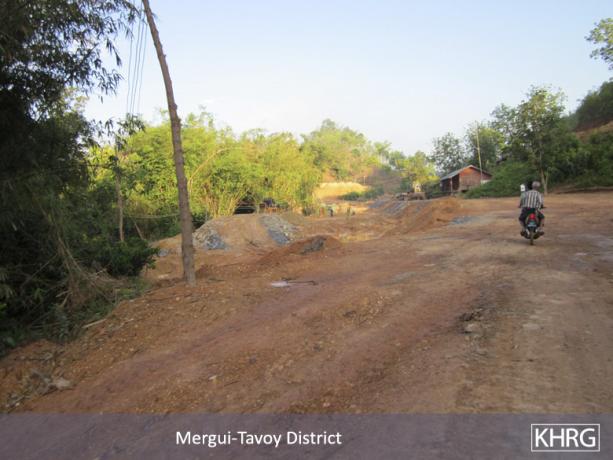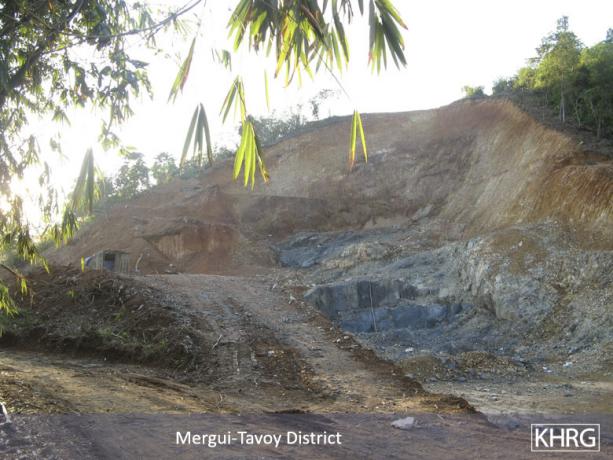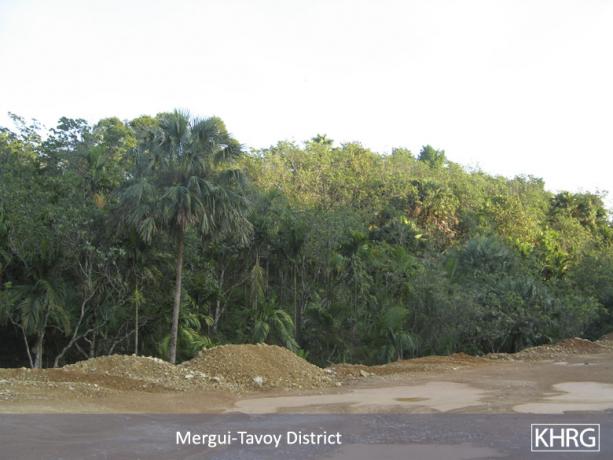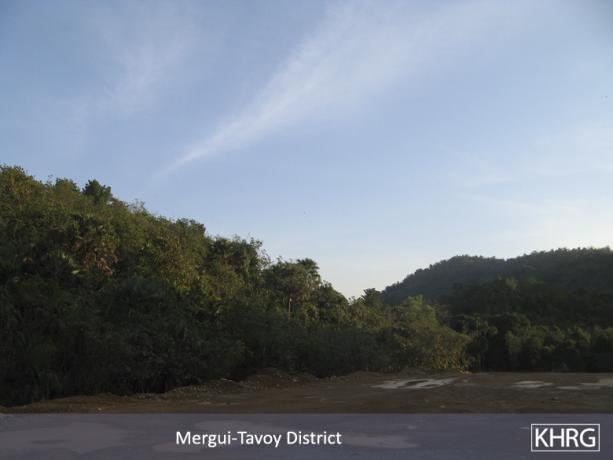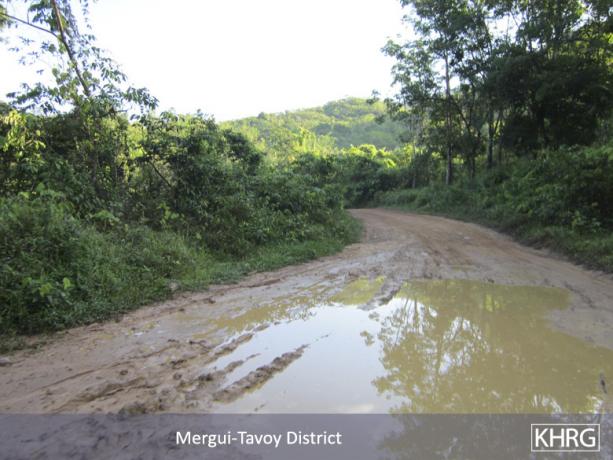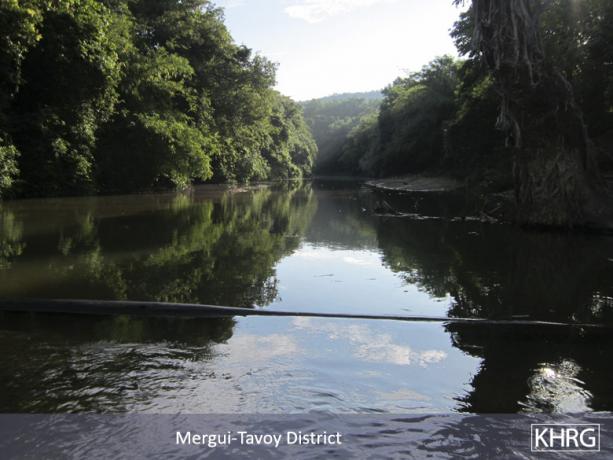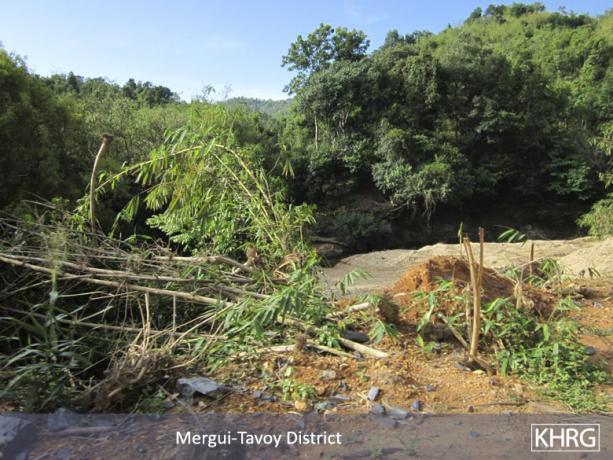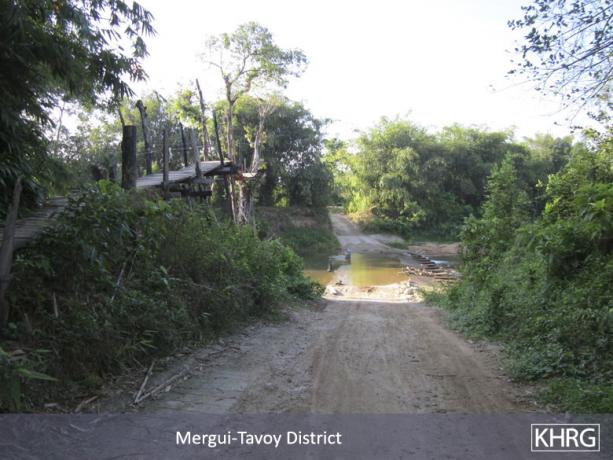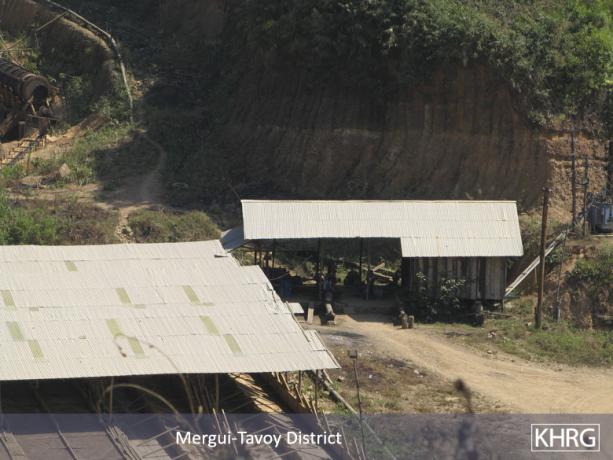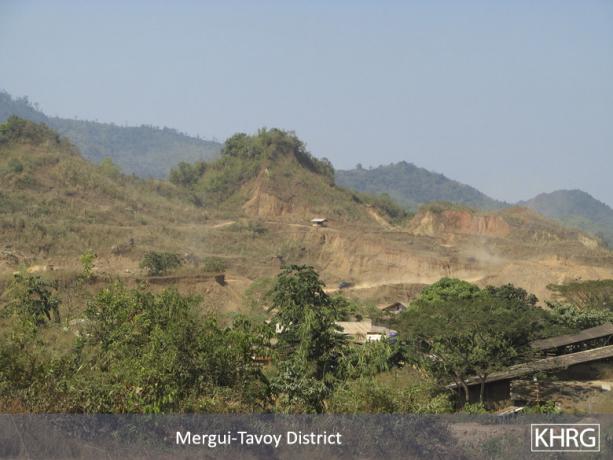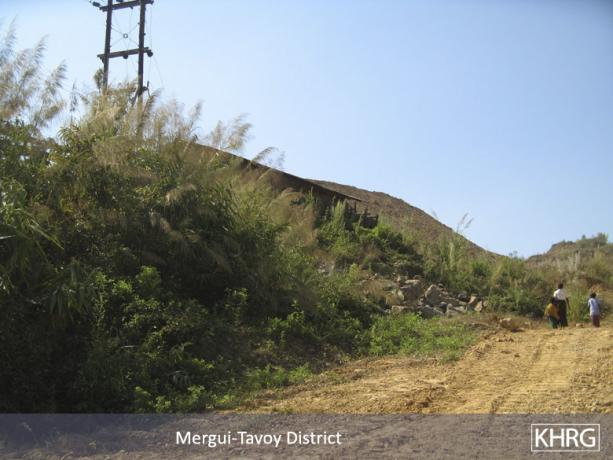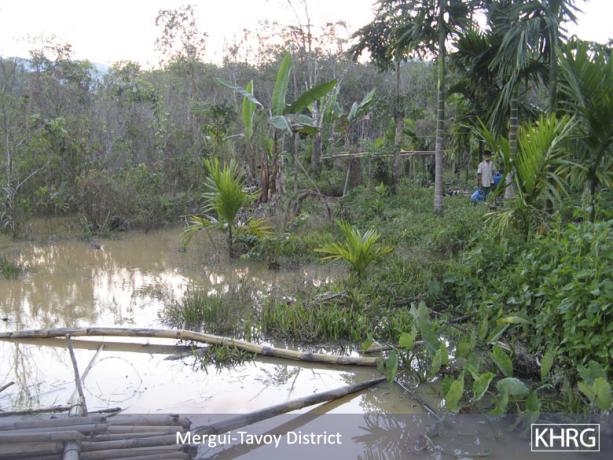This photo set includes 49 still photographs selected from images taken by a KHRG community member between January and April 2012. They were taken in K'Ser Doh Township, Mergui-Tavoy District, and show images of a dam project in A'Nyah Pyah, logging in A'Nya Pyah, U Yay Kyee and Htee Ler Klay villages and mining operations in Hkay Ta Hpoo that have caused a variety of problems for the villagers in the in the areas, such as loss of land from flooding and water pollution. The mining company prevented villagers from protecting themselves from further damage from the chemical flows when they sought to drain a contaminated stream. This photo set was originally published in the appendix of KHRG's thematic report,Losing Ground: Land confiscation and collective action in eastern Myanmar.
Photo Set | K'Ser Doh Township, Mergui-Tavoy District (January to April 2012)
The following photos were taken by a villager in Mergui-Tavoy District who has been trained by KHRG to monitor human rights conditions. They are presented below, censored where necessary for security purposes.[1] The 49 photos below were received along with other information from Mergui-Tavoy District, including 375 other photos, and eight interviews.[2]
1. A'Nya Pyah Dam, K'Ser Doh Township, Mergui-Tavoy District
The photos below were taken on April 7th 2012 by a community member trained by KHRG in K'Ser Doh Township, Mergui-Tavoy District, and show different views of the A'Nya Pyah Dam construction site and surrounding area.
2. Logging in A'Nya Pyah area, K'Ser Doh Township, Mergui-Tavoy District
The photos below were taken on April 7th 2012 by a community member trained by KHRG in K'Ser Doh Township, Mergui-Tavoy District, and show different views of logging activities in A'Nya Pyah, U Yay Kyee and Htee Ler Klay villages.
3. Hkay Ta Mine, K'Ser Doh Township, Mergui-Tavoy District
The photos below were taken on January 11th 2012 by a community member trained by KHRG in K'Ser Doh Township, Mergui-Tavoy District and show different views of the Hkay Ta Mine site and surrounding area.
The above photos show the downstream wall of the dam that is being constructed in Htee Ler Klay in the A’Nya Pyah area. [Photos: KHRG]
The above photos show shelters on the upstream side of the dam site, where workers are housed. [Photos: KHRG]
The above photos show the upstream wall of the dam, where the Htee Ler Klay and P'Ka Yee rivers will be diverted through the project site. [Photos: KHRG]
The above photos were taken in Htee Ler Klay village and depict equipment, stored chemicals, structures and graded landscape around the dam project site. [Photos: KHRG]
The above photos were taken in Htee Ler Klay village and show changes to the local landscape from the dam project. The top four photos show how the hillside has been dug out to widen the channel for water to flow, but the bottom two demonstrate that the project site itself is above much of the surrounding area. That land will flood when the dam is completed, which will destroy land where local people in Htee Ler Klay work for their livelihood. [Photos: KHRG]
The above photos show a road and the landscape of the area where water for the dam will be diverted through. [Photos: KHRG]
The photo on the left is of the Htee Ler Klay River and the photo on the right is of the P'Ka Yee River, both of which are above the dam and will flow into the reservoir for the dam. [Photos: KHRG]
The photos show the side of the river opposite from the construction site. [Photos: KHRG]
This photo shows the river that is the main water channel on which the dam will be built. [Photo: KHRG]
The above photos show logs that were cut down by the Burma Logging Company, and are being stored in U Yay Kyee village. [Photos: KHRG]
The photo on the leftshows additional logs that the Burma Logging Company stored between Htee Ler Klay and A'Nya Pyah villages. The photo on the right shows the vehicle road that links U Yay Kyee, Htee Ler Klay, A'Nya Pyah, Hsay Hklaw and Nyaw Hklaw villages. [Photos: KHRG]
The top four photos above show different views of abandoned operations in Hkay Ta Mine, where metal was extracted from ore using an acid bath and other chemical agents. The bottom four photos show the area surrounding Hkay Ta Mine, in relation to the mountains. [Photos: KHRG]
The above photos were taken in Hkay Too Hkee village. On the left, the stream in the photo is downstream from the Hkay Ta Mine and contains runoff from the mine, including chemicals used to extract metal from ore. Although the mining company no longer operates in this area, the company prevented villagers from accessing the stream in order to drain it so as to avoid the flow of chemicals. The photo on the right shows mining chemicals that the stream contains, on the community member's hand. [Photos: KHRG]
The above photos were taken in Hkay Too Hkee village, and show flooding of a villager’s betel nut plants and surrounding plantation land caused by a Thai mining company. [Photos: KHRG]
Footnotes:
[1] KHRG trains villagers in eastern Burma to document individual human rights abuses using a standardised reporting format; conduct interviews with other villagers; and write general updates on the situation in areas with which they are familiar. When writing situation updates, villagers are encouraged to summarise recent events, raise issues that they consider to be important, and present their opinions or perspective on abuse and other local dynamics in their area.
[2] In order to increase the transparency of KHRG methodology and more directly communicate the experiences and perspectives of villagers in eastern Burma, KHRG aims to make all field information received available on the KHRG website once it has been processed and translated, subject only to security considerations. As companion to this, a redesigned website will be released in 2013. In the meantime, KHRG's most recently-published field information from Mergui-Tavoy District can be found in the report, "Mergui-Tavoy Interview: Saw E---, July 2012," KHRG, March 2013.










